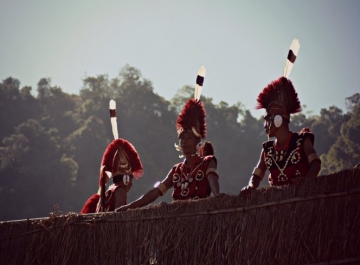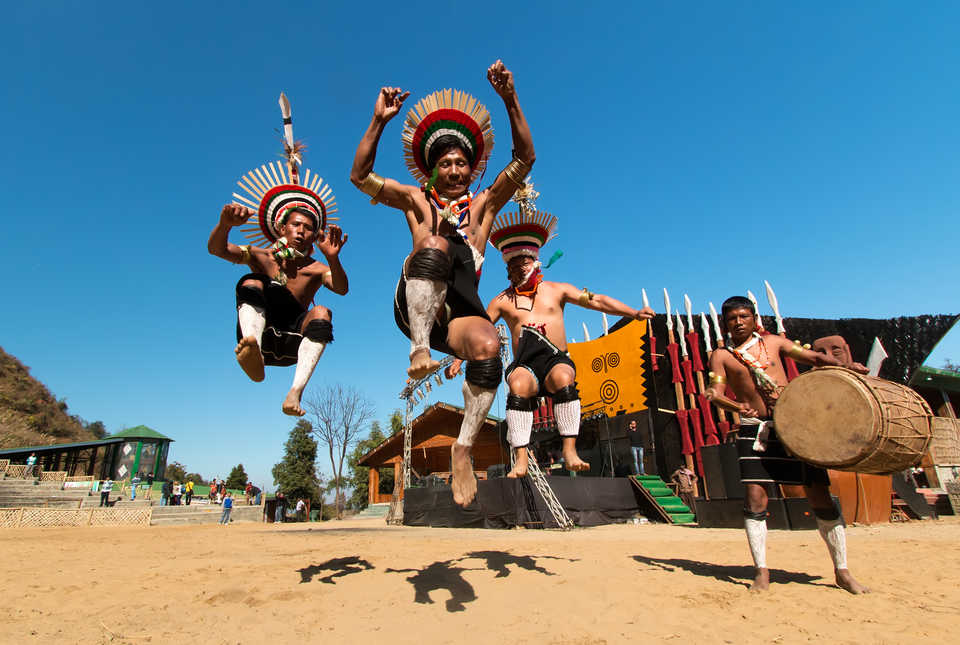Nagaland: An Amazing Tour Destination in North East India

With Kohima as the capital and Dimapur as the largest city, Nagaland in the far North East is one the smaller but most beautiful states in India. Your adventurous travel experience through the hills, valleys and picturesque terrains will be a journey of a lifetime! If you’re planning to visit North East India for travelling, you should not miss Nagaland while planning your travel package.
Here are some of the attractive things you can enjoy in your visit at Nagaland:
Festivals of Nagaland
Nagaland’s rich cultural heritage, breathtaking scenic beauty, and wildlife have attracted travellers from time immemorial. Hornbill festival in December is known as the “festival of festivals”. It should be on your bucket list of your North East India Tour. Nagaland is known as the land of festivals; various tribes living there have their own unique celebrations like Sekrenyi, Moatsu, Bushu Jiba and Miu. These festivals give foreign and Indian travellers a taste of the rich tribal culture of Nagaland.

Cuisine
Nagaland is home to various unique and extravagant tribal cuisines. Fish, meat and fermented products are consumed commonly with smoked pork, with fermented soya bean being the state dish. Bamboo steamed fish, dried pork, roasted intestines and smoked pork stew are some of the famous dishes one must never miss on their visit to Nagaland. Also you should ask your North-East India tour organizer for local drinks like zutho and tutse and beer with sticky rice which compliment the food brilliantly.
Art and crafts
Kohima is home to handicraft handloom emporium where you shop endlessly for famous Naga shawls, tribal ornaments, cane rugs and a lot more. Local markets in Mokokchung, Mon, Wokha and Zunheboto offer a wide range of handmade bags, baskets, antique décor items and war weapons that one cannot simply resist buying. Nagaland is home to tribal art and crafts that in no way fall behind today’s latest trends.
Tourist attractions of Nagaland
Attracted by its rich cultural heritage and history, travelers who visit Nagaland on their North East India Tour should visit Khonoma Village, Kohima state museum, and war cemetery. Veda peak near Mon, Japfu Peak Pulebadze Peak near Kohima open your eyes to the incomparable beauty of the state. Intangki Wildlife Sanctuary and Kohima zoo allow tourists to experience the wildlife in Nagaland.
- STATE MUSEUM:
Located at Bayavü Hill, about 1½ km from the main town, it houses a rare collection of artifacts of each Naga tribe. The State Museum also has authentic Naga precious stones on display. Here one can see the most valued and expensive necklaces used by the Nagas. They are an assortment of precious stones which include cornelian, tourmaline, coral, core of xancus, ivory and other beads, brass and silver bells. Other interesting displays are the Naga Morung/hut models. From these models one can discern that the villages were located on hilltops-perhaps to survey/watch the valley below for approaching friends or foes. The variations in architecture among the different tribes are just amazing. Musical instruments are also displayed. The various instruments give an insight into how music formed an integral part of Naga life. Log drum, Tati, a single stringed instrument, and other instruments made of bamboo and buffalo horns are used during festivals and other social gatherings. For the art lovers, the state museum has an art gallery which houses collections of paintings by different local artists. The themes vary from traditional to modern.
- KOHIMA WORLD WAR-II CEMETERY:
Overlooking Kohima amidst scenic environs, the Kohima War Cemetery is a memorial in the honour of those officers and soldiers killed during the World War II. Formerly known as Garrison Hill it is designed as a series of terraces with magnificent stone steps, bearing testimony to one of the most stubborn, close and bloody fighting in the whole of the Second WorldWar.
On the 18 plots of the cemetery, there are 1421 slabs erected in memory of soldiers who were killed in the Battle of Kohima. The cemetery is maintained by the Commonwealth War Graves Commission. Before leaving Kohima the British erected a moving memorial in memory of their fallen comrades: “When you go home, tell them of us, and say: ‘For your tomorrow, we gave our today.”
- KHONOMA VILLAGE:
Located 20 kms West of Kohima is Khonoma village.The village referred to as “Khwünoria” by the residents is estimated to be around 700 years old and is surrounded by hills that are as high as 9000 ft. It was here that the Naga warriors made their last stand against the British in 1879. The village is named after a plant locally known as “Khüno” that grows in the area. The alder tree (Alnus Nepalensis) is found in abundance in this region. Khonoma is famous for its management of jhum (shifting agriculture) fields with alder trees, which fixes nitrogen in the soil and checks soil erosion. With its mission “Green Khonoma”, it has become the Model Village for eco-tourism. The Village Council has made it mandatory for every household to have dustbins. Once a month, sanitation drives are carried out and the community’s garbage is burnt. The ashes and residue are then used as manure. The combination of rich bio-diversity and stunning landscape makes Khonoma an excellent candidate for eco-tourism.
So ask your North East India travel operator to begin the tour with a visit to the exquisite land of Nagas this winter! Tasty cuisine, tribal art and craft, tribal tourist villages, wildlife and the breathtaking countryside of Nagaland is sure to make your visit to this paradise a compulsory travel plan this year!
